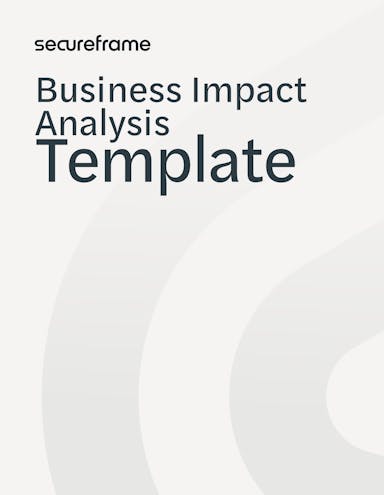
A Guide to Regulatory Change Management & How Software Can Simplify It
Anna Fitzgerald
Senior Content Marketing Manager
Rob Gutierrez
Senior Cybersecurity and Compliance Manager, CISA, CCSK, CMMC RP
Sustainability and ESG-related regulations are on the rise globally. AI regulation has already been passed by the EU, China, and parts of the US and is also in development at the federal level — and is expected to increase. Regulatory scrutiny on tech and financial organizations is also increasing.
Given that these are just a few examples of new regulations, it makes sense that 61% of corporate risk and compliance professionals reported that their top strategic priority over the next 12 to 18 months was keeping abreast of upcoming regulatory and legislative changes.
Doing so is a daunting task for organizations across all industries, however. Having a robust regulatory change management program that leverages software can help organizations ensure compliance with relevant regulations and manage compliance risks.
Find everything you need to know about regulatory change management below.
The challenges of regulatory changes
To understand the importance of regulatory change management, you have to first understand the challenges organizations face due to regulatory changes. Below are five of the most significant ones.
Complexity and acceleration of regulatory change
The regulatory landscape is complex and constantly evolving, with a vast array of regulations at local, national, and international levels. Regulatory changes often occur at a rapid pace, driven by factors such as technological advancements, geopolitical shifts, and emerging risks. Keeping up with both the volume of regulatory changes and understanding their implications can be daunting.
Interpretation and ambiguity
Regulatory requirements are subject to interpretation, which can be difficult to do without previous experience performing audits or working in internal compliance at an organization. Typically, regulatory requirements are either very specific and complex or broad and too general. This ambiguity makes it difficult to know what measures to implement and can sometimes result in regulatory scrutiny or legal disputes.
This challenge is a driving factor for automation and technology adoption. When asked what the challenges led them to purchase Secureframe in a survey conducted by UserEvidence, the number one answer was limited knowledge and expertise in compliance and security matters, reported by 67% of users.
Regulatory fragmentation
For organizations operating across multiple jurisdictions or in certain industries, navigating the regulatory landscape may be particularly difficult in the face of overlapping or conflicting regulations from multiple regulatory bodies. Navigating this regulatory fragmentation, coordinating tasks and priorities, and ensuring compliance with all relevant requirements can be complex and resource-intensive.
Operational disruption
Implementing regulatory changes may disrupt existing operations, requiring organizations to make adjustments to processes, products, and services. These disruptions can lead to delays, inefficiencies, and increased operational costs.
Costs
Compliance with regulatory changes often requires significant financial investments in updating systems, processes, training, and hiring specialized personnel. While the costs of keeping up with regulatory changes may be high, the costs of failing to do so are higher. Failure to comply with regulatory changes can result in significant penalties, fines, legal actions, and reputational damage. These fines can be significantly higher than any of the costs or investments in maintaining compliance. Organizations must actively monitor regulatory developments and implement robust compliance measures to mitigate the risk of non-compliance.

A regulatory change management program can help your organization address these challenges. Let’s look at how below.
Recommended reading

110 Compliance Statistics to Know for 2024
What is regulatory change management?
Regulatory change management refers to the process and procedures that organizations implement to effectively monitor, assess, adapt to, and comply with regulatory requirements that affect their industry and operations.
This encompasses a range of activities aimed at ensuring that an organization stays abreast of regulatory changes, understands their impact, and adjusts internal policies, procedures, and systems accordingly in order to achieve continuous compliance, such as:
- Clearly defining which regulations apply to your organization.
- Aligning your policies and procedures to existing regulations that apply to your organization.
- Staying informed about relevant regulatory and legislative changes.
- Assessing the impact of regulatory changes on your existing compliance program and risk profile.
- Developing a plan to address regulatory changes, including assigning roles and responsibilities.
- Following and keeping up with regulation and framework updates.
- Updating or implementing new controls to mitigate new regulatory risks.
- Keeping relevant stakeholders, including employees, executives, partners, vendors, customers, and other third parties, informed of upcoming changes and their implications.
- Providing necessary training to employees to ensure understanding and compliance with new regulations.
- Monitoring implemented changes to assess their effectiveness.
- Reviewing and updating your organization’s change management plan as needed.
Effectively managing regulatory changes in these ways can help your organization avoid compliance violations, legal penalties, reputational damage, and operational disruptions. This is particularly important in industries with complex and frequently changing regulatory environments, such as finance, healthcare, and energy.
Recommended reading

AI in Cybersecurity: How It’s Used + 8 Latest Developments
Regulatory change management process
The regulatory change management process involves several steps to ensure that organizations effectively monitor, assess, and adapt to regulatory changes. While the specific process may vary depending on the organization's size, industry, and regulatory environment, we’ll cover some common steps of a manual process below.
Later, we’ll look at how automation can help simplify and streamline this process.
1. Identify regulatory changes
Establish processes to monitor regulatory changes relevant to the organization's industry, jurisdiction, and operations. Manual processes may involve managing spreadsheets, subscribing to regulatory updates, maintaining relationships with industry associations, and actively monitoring legislative and regulatory bodies’s websites.
2. Perform a regulatory impact analysis
Once a regulatory change is identified, conduct a comprehensive impact analysis to understand how the change will affect your organization's operations, processes, products, services, and compliance requirements. This assessment should consider both direct and indirect impacts and involve relevant stakeholders across the organization.
3. Conduct a gap analysis
Compare existing policies, procedures, and controls against the requirements of the new regulation to identify any gaps or areas where updates are needed to ensure compliance.
4. Develop a plan
Develop a plan for addressing the necessary changes, including allocating resources, setting timelines, and establishing priorities based on the urgency and significance of the regulatory changes.
5. Implement the changes
Update internal policies, procedures, and controls to align with the new regulatory requirements. This may involve revising existing documents, developing new policies or procedures, and implementing changes to internal systems and processes. It will also likely involve coordinating across different departments or functions to ensure consistent implementation and compliance across your organization.
6. Communicate changes to employees
Ensure that relevant stakeholders within the organization are informed about the regulatory changes and understand their implications. This may involve conducting training sessions, workshops, or providing other forms of communication to educate employees on the new requirements and their responsibilities for compliance.
7. Monitor and review the changes
Continuously monitor compliance with new regulatory requirements and periodically review the effectiveness of the implemented changes. This may involve conducting internal audits or other forms of review to identify any gaps or areas for improvement.
8. Document the change management process
Maintain documentation of the regulatory change management process, including the steps taken, decisions made, and evidence of compliance. This documentation may be required for regulatory reporting purposes or in the event of a third-party assessment.
9. Continuously review and make improvements
Regularly review and update the regulatory change management process to incorporate lessons learned, address emerging risks, and improve efficiency and effectiveness over time.
Following a step-by-step process like the one outlined above is an excellent first step for organizations looking to improve regulatory change management. Later, we’ll look at how incorporating automation and technology into that process can help organizations effectively adapt to regulatory changes, minimize compliance risks, and ensure ongoing compliance with applicable laws and regulations.
Recommended reading

What Is Compliance Risk and How To Manage It [+ Free Templates]
Business impact analysis template for regulatory change
To help you consistently evaluate regulatory change across your organization, we’ve created a business impact analysis template. Using it helps ensure your organization has a standardized impact analysis process that measures the impact of regulatory changes on your organization to determine if action is needed and, if so, how to prioritize action items and resources.

Free BIA template
Download this template and modify the contents based on the regulatory change and its impact on your business.
Regulatory change management best practices
Regulatory change management best practices encompass a set of strategies and approaches that organizations can adopt to effectively navigate regulatory changes and ensure ongoing compliance. Here are some key best practices:
- Assign roles and responsibilities: Designate a dedicated team or individual responsible for overseeing regulatory change management activities within the organization. This team should have the necessary expertise and authority to monitor, assess, and implement regulatory changes effectively.
- Ensure cross-functional collaboration: Foster collaboration and communication across different departments and functions within the organization to ensure a holistic approach to regulatory change management. Involve stakeholders from legal, compliance, risk management, operations, and other relevant areas in the process.
- Take a risk-based approach: Prioritize regulatory changes based on their potential impact on the organization's operations, processes, products, services, and compliance obligations. Focus resources on addressing high-risk changes first while ensuring that all relevant changes are adequately addressed over time.
- Keep employees informed: Provide regular training and education to employees on regulatory requirements relevant to their roles and responsibilities. Raise awareness about the importance of compliance and empower employees to identify and escalate regulatory issues proactively.
- Implement continuous monitoring processes: Implement processes for ongoing monitoring of compliance with regulatory requirements and periodic reviews of the effectiveness of regulatory change management activities. This includes conducting audits, assessments, and evaluations to identify any gaps or areas for improvement. Automation can help ensure continuous compliance.
- Leverage automation: Leverage technology solutions such as regulatory compliance software, workflow automation tools, and regulatory intelligence platforms to streamline regulatory change management processes, enhance efficiency, and improve visibility into regulatory requirements.
Recommended reading

5 Hardest Things About Security Compliance and How Technology Can Help
Regulatory change management software
In a 2021 survey, 76% of compliance managers said they manually scanned regulatory websites to track changes and assess the impact on their organization. However, this manual approach is not enough for most organizations to keep pace with regulatory changes today. In the 2023 Thomson Reuters Risk & Compliance Survey Report, more than half (53%) of corporate risk and compliance professionals said they were addressing increased regulatory scrutiny with more sophisticated technologies.
One such technology is regulatory change management software, a specialized tool designed to assist organizations in effectively managing the complexities of regulatory compliance.
Sophisticated GRC software typically includes RCM features that streamline the process of monitoring, assessing, and implementing regulatory changes, such as:
1. Evidence collection
Using a GRC platform that integrates with other systems and tools can help automate evidence collection for various regulatory frameworks to reduce the manual overhead of proving adherence to controls. This type of automation can significantly reduce the costs and efforts of managing a regulatory compliance program as you scale.
A survey of Secureframe users conducted by UserEvidence substantiated that evidence collection was a driving factor for automation and technology adoption. When asked what the most important Secureframe features are to them, 79% of Secureframe users rated automated evidence collection as one of the most important Secureframe features to them.
2. Central repository for regulatory compliance
A GRC platform can centralize, organize, and update regulatory requirements, controls, and evidence in one place. The best platforms map these regulatory requirements to controls and evidence as well as owners, tasks, and workflows so organizations can quickly identify and remediate any gaps. This type of flexible and modular architecture facilitates regulatory change management and collaboration among stakeholders.
The UserEvidence survey corroborated that this visibility was a key decision factor for Secureframe users to implement automation and technology. When asked what challenges led them to purchase Secureframe, 55% of Secureframe users reported a lack of centralized, single source of truth in storing and managing security compliance data.
3. Control mapping
As you strive to comply with more regulation over time, a GRC platform with control mapping capabilities can help reduce duplicate work and speed up time-to-compliance. Control mapping involves mapping the control set of one regulatory framework to the requirements of another framework in order to identify common controls. By doing so, organizations don’t have to waste valuable time and resources creating independent sets of controls, performing redundant tests, gathering the same evidence, and repeating other activities to comply with multiple regulatory frameworks that have common controls.
While you can manually map controls to framework requirements and tests, a GRC platform can automate this process, reducing the time it takes and potential for human error. This was supported by our UserEvidence survey findings as well. When asked how they benefited from Secureframe, 50% of Secureframe users said they sped up time-to-compliance for multiple frameworks.
4. Task management
By automating workflow tasks such as assigning responsibilities, tracking progress, and sending notifications, a GRC platform streamlines the regulatory change management process. This helps ensure that regulatory changes are addressed promptly and consistently across your organization.
5. Risk Assessment
A GRC platform with risk assessment features can help you identify and prioritize regulatory changes based on their potential impact and likelihood of non-compliance. It may include risk scoring, risk heat maps, and other tools for risk analysis.
6. Dashboards
Dashboards can enable your organization to monitor compliance status and identify areas of non-compliance for various regulatory frameworks at-a-glance.
7. Continuous monitoring
A GRC platform with continuous monitoring capabilities can alert your organization of non-conformities or misconfigurations to keep you from falling out of compliance with any relevant regulatory frameworks. Monitoring controls in real time can provide an organization with a much more dynamic view of the effectiveness of those controls and the overall security posture of the organization than manual processes.
Given these benefits, it’s not surprising that 84% of Secureframe users in the UserEvidence survey reported continuous monitoring to detect and remediate misconfigurations as an important Secureframe feature to them, making it the top answer.
8. Customizability
The best GRC software is customizable so it can meet the specific needs and requirements of different industries, organizations, and regulatory environments. It should also be scalable to accommodate growth and changes in regulatory complexity over time.
Overall, GRC software helps organizations stay informed, organized, and proactive in managing regulatory compliance, reducing risks, and ensuring ongoing adherence to regulatory requirements.
Recommended reading

7 Benefits of Continuous Monitoring & How Automation Can Maximize Impact
How Secureframe can simplify regulatory change management
Regulatory change management cannot be achieved effectively with manual processes alone. Secureframe automates processes like continuous monitoring, evidence collection,policy management, risk assessments, and task management, reducing the time and effort it takes for organizations to understand how regulatory changes affect their existing compliance program.
As a result of Secureframe’s automation capabilities, Secureframe users reported a range of benefits in the survey conducted by UserEvidence, including:
- Saved time and resources obtaining and maintaining compliance (95%)
- Improved visibility into security and compliance posture (71%)
- Reduced costs associated with a compliance program (50%)
- Sped up time-to-compliance for multiple frameworks (50%)

The Secureframe team not only reaches out to notify customers of any regulatory changes affecting their compliance posture. The Secureframe platform is also built and maintained by compliance and security experts, so any regulatory changes or framework updates are reflected in the platform. For example, as many applicable controls from PCI DSS 3.2.1 as possible were mapped to PCI DSS 4.0 in the Secureframe platform so organizations can see an accurate difference between their work in the old report versus the new report. Without this control mapping, it’d be difficult to understand what additional work is required to comply with v4.0, which may force you to waste time repeating the same activities and delay your new report.
Secureframe did the same to help customers comply with ISO 27001:2022 and with the 2023 amendments to NYDFS NYCRR 500, and is currently working on updates for NIST CSF 2.0. These are just a few examples of frameworks that have been recently updated.
Learn more about how our suite of automated tooling paired with compliance expertise enables organizations to navigate the complexities of the changing regulatory landscape — talk to a product expert today.
About the UserEvidence Survey
The data about Secureframe users was obtained through an online survey conducted by UserEvidence in February 2024. The survey included responses from 44 Secureframe users (the majority of whom were manager-level or above) across the information technology, consumer discretionary, industrials, financial, and healthcare industries.
FAQs
What is regulatory management?
Regulatory management refers to the process of identifying, assessing, implementing, and monitoring regulatory requirements and changes that affect an organization. It involves the systematic handling of regulations pertinent to the industry in which a company operates, ensuring compliance with legal standards, and managing risks associated with regulatory changes.
How do you implement regulatory changes?
Implementing regulatory changes involves several steps, including:
- Identification: Stay informed about relevant regulatory updates through regulatory intelligence sources.
- Assessment: Analyze the impact of regulatory changes on current operations, policies, and procedures.
- Planning: Develop a strategy to address the changes, including assigning responsibilities and timelines.
- Communication: Inform stakeholders within the organization about the upcoming changes and their implications.
- Training: Provide necessary training to employees to ensure understanding and compliance with the new regulations.
- Implementation: Make necessary adjustments to policies, procedures, systems, and operations to comply with the new regulations.
- Monitoring: Continuously monitor compliance and assess the effectiveness of implemented changes.
- Adaptation: Be prepared to adapt further as needed to maintain compliance with evolving regulations.
What is regulatory change risk?
Regulatory change risk refers to the potential negative impacts on an organization resulting from changes in regulatory requirements. These risks can manifest in various ways, including:
- Compliance risk: Failure to comply with new regulations can lead to fines, legal actions, or reputational damage.
- Operational risk: Changes in regulations may necessitate adjustments to processes, systems, or products, which can disrupt operations and increase costs.
- Reputational risk: Non-compliance or mishandling of regulatory changes can damage the organization's reputation among customers, investors, and other stakeholders.
- Financial risk: Regulatory changes may require significant investments in compliance measures or result in revenue losses due to changes in products or markets.
- Strategic risk: Failure to anticipate and adapt to regulatory changes can impact the organization's long-term strategic goals and competitiveness.
Effective regulatory management aims to mitigate these risks by proactively addressing regulatory changes and ensuring timely compliance.
Use trust to accelerate growth

Anna Fitzgerald
Senior Content Marketing Manager
Anna Fitzgerald is a digital and product marketing professional with nearly a decade of experience delivering high-quality content across highly regulated and technical industries, including healthcare, web development, and cybersecurity compliance. At Secureframe, she specializes in translating complex regulatory frameworks—such as CMMC, FedRAMP, NIST, and SOC 2—into practical resources that help organizations of all sizes and maturity levels meet evolving compliance requirements and improve their overall risk management strategy.

Rob Gutierrez
Senior Cybersecurity and Compliance Manager, CISA, CCSK, CMMC RP
Rob Gutierrez is an information security leader with nearly a decade of experience in GRC, IT audit, cybersecurity, FedRAMP, cloud, and supply chain assessments. As a former auditor and security consultant, Rob performed and managed CMMC, FedRAMP, FISMA, and other security and regulatory audits. At Secureframe, he’s helped hundreds of customers achieve compliance with federal and commercial frameworks, including NIST 800-171, NIST 800-53, FedRAMP, CMMC, SOC 2, and ISO 27001.